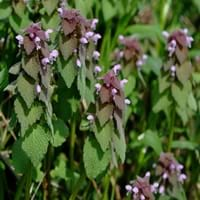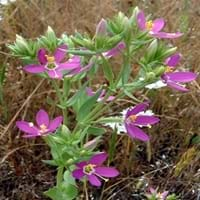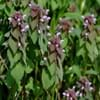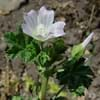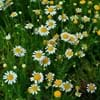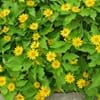Life Span
Annual
Perennial
Type
Flowering Plants
Herbs, Perennial
Origin
World/Pandemic, Europe, Asia
Mexico, Latin America and the Caribbean, Central America, South America
Types
Not Available
Not Available
Habitat
Cultivated Beds, gardens
Mountains
USDA Hardiness Zone
4-8
Not Available
AHS Heat Zone
Not Available
Not Available
Sunset Zone
Not Available
Not Available
Habit
Spreading
Clump-Forming
Flower Color
Purple, Pink
White
Flower Color Modifier
Bicolor
Bicolor
Fruit Color
Not Available
Not Available
Leaf Color in Spring
Purple, Dark Green
Green, Light Green, Dark Green
Leaf Color in Summer
Purple, Dark Green
Green, Light Green, Dark Green
Leaf Color in Fall
Not Available
Green, Light Green, Dark Green
Leaf Color in Winter
Light Green
Light Green
Leaf Shape
Oval to egg shaped
Narrow Oblong
Plant Season
Not Available
Summer, Fall
Sunlight
No Shade, Partial shade
Full Sun, Partial Sun
Growth Rate
Very Fast
Very Fast
Type of Soil
Clay, Loam, Sand
Clay, Loam, Sand
The pH of Soil
Acidic, Neutral, Alkaline
Acidic, Neutral, Alkaline
Soil Drainage
Average
Well drained
Bloom Time
Spring, Late Spring
Indeterminate
Tolerances
Drought
Drought
Where to Plant?
Ground
Container, Ground
How to Plant?
Root Division, Seedlings
Seedlings, Stem Planting
Plant Maintenance
Medium
Medium
Watering Requirements
Average Water Needs, Do Not over Water, Requires regular watering
Never Over-water, Requires watering in the growing season, Water Deeply
In Summer
Lots of watering
Lots of watering
In Spring
Moderate
Moderate
In Winter
Average Water
Average Water
Soil pH
Slightly Acidic
Acidic, Alkaline, Neutral
Soil Type
Clay, Moist, Well drained
Well drained
Soil Drainage Capacity
Moist, Well drained
Well drained
Sun Exposure
No Shade, Partial shade
Full Sun, Partial Sun
Pruning
Pinch or prune as they grow to promote branching and bushiness, Remove deadheads
Remove damaged leaves, Remove dead branches, Remove dead leaves
Fertilizers
All-Purpose Liquid Fertilizer
All-Purpose Liquid Fertilizer, fertilize in fall, fertilize in growing season, fertilize in spring, Water soluble fertilizers
Pests and Diseases
Not Available
Red blotch
Plant Tolerance
Drought
Drought
Flower Petal Number
Single
Single
Fragrant Bark/Stem
Yes
No
Foliage Texture
Medium
Fine
Foliage Sheen
Matte
Matte
Attracts
Not Available
Flying insects, Not Available
Allergy
no allergic reactions
no allergic reactions
Aesthetic Uses
Ground Cover
Beautification, Bouquets, Landscape Designing, Showy Purposes
Beauty Benefits
Not Available
Improve skin condition
Environmental Uses
Air purification
Air purification, Food for insects, soil erosion prevension on hill slopes
Medicinal Uses
Astringent, Diaphoretic, Diuretic, Purgative, Styptic
Diarrhea, Eczema, Indigestion, Malaria, Respiratory Disorders, Stomach pain, Weight loss
Part of Plant Used
Flowers, Leaves
Whole plant
Other Uses
Employed in herbal medicine, Used in Homeopathy
Can be made into a herbal tea, Decoration Purposes, Employed in herbal medicine, Showy Purposes, Used as Ornamental plant
Used As Indoor Plant
No
No
Used As Outdoor Plant
Yes
Yes
Garden Design
Groundcover
Edible
Botanical Name
LAMIUM purpureum
EUPHORBIA hypericifolia
Common Name
Purple Archangel, Purple Deadnettle, Red Deadnettle
Canchalagua, Hypericum-leaved Spurge, Leche-leche
In Hindi
Purple Deadnettle
Canchalagua
In German
Lila Taubnessel
Canchalagua
In French
Violet Ortie blanche
canchalangua
In Spanish
Púrpura Deadnettle
canchalagua
In Greek
μωβ Deadnettle
Canchalagua
In Portuguese
Roxo Deadnettle
Canchalagua
In Polish
Jasnota purpurowa
Canchalagua
In Latin
Purpura Deadnettle
Canchalagua
Phylum
Magnoliophyta
Spermatophyta
Class
Magnoliopsida
Dicotyledonae
Order
Lamiales
Euphorbiales
Family
Lamiaceae
Acanthaceae
Clade
Angiosperms, Asterids, Eudicots
Not Available
Tribe
Not Available
Not Available
Subfamily
Lamioideae
Not Available
Number of Species
Not Available
Season and Care of Purple Deadnettle and Canchalagua
Season and care of Purple Deadnettle and Canchalagua is important to know. While considering everything about Purple Deadnettle and Canchalagua Care, growing season is an essential factor. Purple Deadnettle season is Not Available and Canchalagua season is Not Available. The type of soil for Purple Deadnettle is Clay, Loam, Sand and for Canchalagua is Clay, Loam, Sand while the PH of soil for Purple Deadnettle is Acidic, Neutral, Alkaline and for Canchalagua is Acidic, Neutral, Alkaline.
Purple Deadnettle and Canchalagua Physical Information
Purple Deadnettle and Canchalagua physical information is very important for comparison. Purple Deadnettle height is 10.20 cm and width 15.20 cm whereas Canchalagua height is 25.40 cm and width 30.50 cm. The color specification of Purple Deadnettle and Canchalagua are as follows:
Purple Deadnettle flower color: Purple and Pink
Purple Deadnettle leaf color: Purple and Dark Green
Canchalagua flower color: White
- Canchalagua leaf color: Green, Light Green and Dark Green
Care of Purple Deadnettle and Canchalagua
Care of Purple Deadnettle and Canchalagua include pruning, fertilizers, watering etc. Purple Deadnettle pruning is done Pinch or prune as they grow to promote branching and bushiness and Remove deadheads and Canchalagua pruning is done Remove damaged leaves, Remove dead branches and Remove dead leaves. In summer Purple Deadnettle needs Lots of watering and in winter, it needs Average Water. Whereas, in summer Canchalagua needs Lots of watering and in winter, it needs Average Water.
